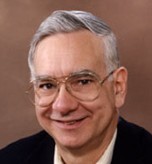David E. Pritchard: Assessing Learning
 | Cecil and Ida Green Professor of Physics, Department of Physics, Massachustets Institute of Technology (Cambridge, MA) Consultant, Pearson Education |
Abstract
Historically, assessment was primarily summative – to determine the level of proficiency of an applicant, student, or a class. To guide individual instruction in an intelligent tutoring system, or to guide a teacher whose class uses an ITS for homework, it is desirable to mine the data generated within the ITS to provide an up to date summary of each student's skill – hopefully as detailed as possible. Such data mining is helpful for improving classroom instruction also. We'll show examples that address: "Are students learning?" "If so, from which learning activity?" "Which parts of the tutoring work best?" "What student habits are detrimental/helpful to learning?" and "Extending Item Response Theory to provide a Current Skill." These studies were based on data collected as students worked through problems in the online web-based tutorial program, MasteringPhysics that was used by ~100,000 college students in this past academic year. We will also discuss with the audience, "What should we be teaching?"


